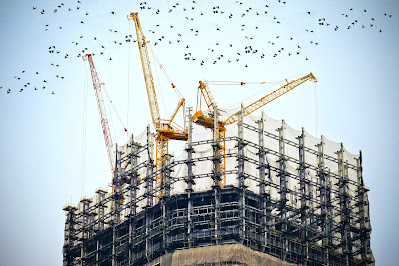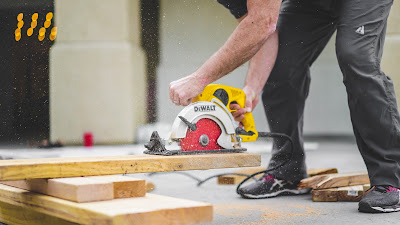What is Construction Using Fast-Track Technology?
According to construction industry slang, fast-track construction is a project delivery technique that begins before the design is finished. To do the task faster is the goal. Fast-tack has gained popularity despite the fact that telescoping may be a more appropriate name given how the processes overlap. For various building owners' purposes, shorter timetables are preferred.
A quicker timeline may result in a company releasing products faster, a school system needing less space, or just giving a family a new house sooner. Shorter timelines may also result in lower overhead expenses for the design and construction companies and lower construction financing costs. Additionally, shorter timelines might lessen the effect of inflation during building.
Integrating the design and construction phases enables fast tracking of the project, but it is more challenging to manage than the standard design-bid-build method. It necessitates thorough process understanding, efficient planning, integrity, and close collaboration between the organizations carrying out the work.
Due to the usual design-bid-build procedure, the project's total cost cannot be determined until construction starts. On fast-track projects, the core of the contract is a complete collection of construction contracts and specifications that outline what the builder promises to construct.
Setting the final cost raises challenges because the design construction documentation and specifications are insufficient. With the builder, a construction manager, or a general contractor, owners often use a cost-reimbursable contract. A cost estimate with no assurance may be included in the contract. There might be a price cap that is guaranteed. Even with a GMP, there may be disagreements on the range of work it covers.
Due to the fact that the design wasn't finalized when the contract was signed, there is also a chance that work completed in the early stages of the project won't be compatible with design decisions made later, such as if the building's shape changes after the foundations are constructed. Modifying the finished foundations is more expensive and takes longer, and it may be necessary to install drains or water and power connections that were not initially planned if a piece of equipment is chosen at a later stage.
Additionally, there may be a conflict of interest if the contractor interprets the design brief differently than the owner. If time is not of the essence, owners may choose to finish the design and obtain a set lump sum payment before beginning the design-bid-build process.
Fast-track can be utilized with any project delivery method, including centimeters at risk and agency centimeters if there is a need to expedite project delivery. see integrated project delivery, design-build bridging, and construction management. By soliciting separate general construction contracts for the various phases of the work, even the conventional design-bid-build process can incorporate fast-track concepts.
Many owners, however, select knowledgeable project teams because they believe the benefits outweigh the dangers. 40% of construction projects reportedly employ fat-track, according to one source. Continue to read.
These are the amazing Fast-Track Construction Technologies.
- Contech Bin-Wall
- Wetpour Rubber Crumb Surfacing
- Volma
- Nudura
- Cicabloc
- Blizz-z Terrastone PFM 1K
- Installation of Metal Roof Tiles
Contech Bin-Wall
This product is American-made. The bin wall retaining wall system looks like this. In essence, these are adjacent containers that are 10 feet wide and can even be filled with soil from the construction site. The system's benefits include its simplicity and low cost of installation, which even inexperienced people can complete.
It won't be too expensive or inconvenient for installation or maintenance. Installation does not require specialized tools or pricey equipment. The bin wall is employed for a number of purposes, such as shoreline erosion prevention and road and railroad reinforcement. The device can add another layer of defense for military sites and is also useful as a breakwater system.
The bin barrier can also survive unexpected ground changes that would demolish more rigid constructions because it is flexible.
Wetpour Rubber Crumb Surfacing
Pace with the fast wonder what the material is that makes up the playground flooring? Typically, it is constructed of pellets and special rubber that has been mixed with polyurethane, adhesive, and colors. The end result not only lowers the possibility of harm but also withstands changes in weather, precipitation, and even spiked shoes. The coating is created on-site in the shape of rolls that are ready to install.
Latin-trained specialists from a British company. The pellets are produced in Switzerland using synthetic rubber and have a covering known as a wet paw. All year long, it can be installed, but once it's done, you have to wait at least 24 hours before walking on it. The site can be embellished with various patterns, which calls for a range of dies, and the thickness is simply changed in accordance with the playground apparatus.
Volma
Utilizing a laser level and the collater 6 stations to apply plaster without screeds With this set-up, you can work quickly and expertly while being certain that your mortar is properly prepared. Although the station appears to be rather enormous, it is readily divided into four pieces for transport. A 33-foot mortar hose and a 24-inch mortar gun are also included. All follow-up procedures are made simpler by the fast application speed.
The task can be completed by one person, and the compound used permits a maximum thickness of 2.4 inches on walls and ceilings and a recommended thickness of up to 1.2 inches.
Nudura
The blocks of hydro foam insulation from a Canadian business are up next. The blocks' lighter weight and ease of cutting enable quicker installation and simpler piping when compared to conventional solutions.
When installed, the typical block is a four-foot square with a thickness of 2.5 inches that may be simply overlapped on all four sides. There are further variations that are three and four thick.
The blocks are composed of high-quality polystyrene foam, and according to the maker, they are completely recyclable in addition to being environmentally friendly. The phone blocks are water and moisture resistant and have been given the low emission material certification by lead standards.
Cicabloc
Let's resume our decision with a group of French engineers who provide nothing less than the outcome of thermoplastic innovation. What have they thought of? These are the foldable formwork blocks known as Seeker Blocks. Weight is one of the main benefits. Each block weighs only five and a half pounds and a pallet of 150 blocks weighs only 838 pounds.
This weighs around 80% less than equivalent alternatives. The simple folding of hinges will allow for easy cutting and joining, making work much more convenient. Any type of weather won't cause the material to deteriorate. A wall that has been installed resembles a reinforced concrete wall in a number of ways.
There are additional variations available in addition to the 24 x 8-inch regular block. The material's maker emphasizes that it is perfect for even complicated projects like elevator shafts and retaining walls and that it is also naturally sustainable for and environment.
Blizz-z Terrastone PFM 1K
For grouting the Terestone PFM 1K, here is an intriguing product. It distinguishes out for its user-friendliness, is appropriate for porcelain tiles and paving stones, and is intended for joints up to 1.2 inches deep. The substance is available in three colors and resists salt, cold ultraviolet radiation, and precipitation all at once.
After 24 hours, the final area will be suitable for weed growth, and it will take about a week for the area to fully harden. In the conclusion, the manufacturer mentions that.
The item can survive even road sweepers. It is possible to operate in a light rainstorm as long as the surface is cleaned, and hydrated, and the mixture is lightly spread. After 15 to 20 minutes of carefully compacting the mixture, any leftover mixture may be quickly removed with water.
Installation of Metal Roof Tiles
Would anyone understand the date of the creation of metal roof tiles? This well-liked roofing material has been around since the early 1980s. At that time, the Finnish manufacturer Ranilla created the first steel profile sheet that resembled a roof tile.
Due to its suitability for usage in a temperature range of minus 58 to 122 degrees Fahrenheit, the device quickly acquired popularity and is now common on building sites all over the world. Metal roof tiles have a number of benefits, including ease of installation. As a result, there is a tonne of videos on the subject. For instance, this is how a two-person team should work on a gable roof.
Finally, some viewers are not enthusiastic. For instance, they pointed out that contractors need to have worn safety gear. How do you feel?




_11zon.png)

No comments:
Post a Comment